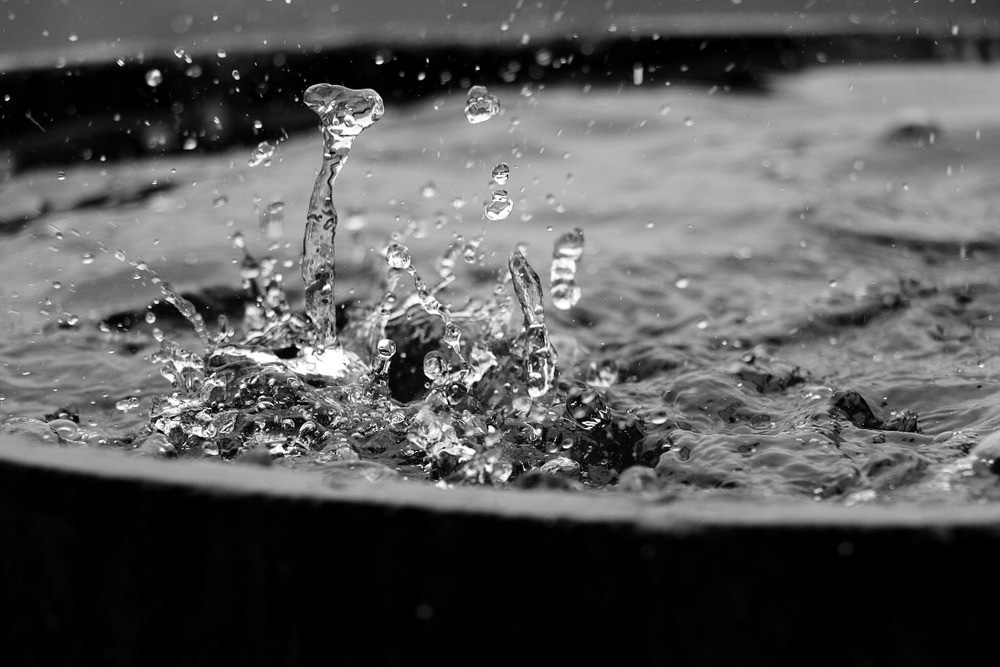 By Surbhi JainReviewed by Susha Cheriyedath, M.Sc.Aug 9 2022
By Surbhi JainReviewed by Susha Cheriyedath, M.Sc.Aug 9 2022In a review article recently published in the journal ACS Materials Au, researchers discussed the recent developments in atmospheric water harvesting materials.

Study: Recent Development of Atmospheric Water Harvesting Materials: A Review. Image Credit: Bianca Grueneberg/Shutterstock.com
Background
All life on Earth depends on water to exist and persist. 2.8 billion people in 48 nations throughout the world are currently concerned about the lack of freshwater due to geographic and climatic restrictions, and based on plausible projections, the impacted population could increase to 4 billion. Therefore, the development of next-generation technologies for freshwater harvesting that are affordable, have a high water adsorption capacity, and are simple to install and use is regarded as a possible solution to this global problem.
Currently, water conservation methods in deserts or wastelands typically require high investments, high maintenance costs and/or high operating costs, high environmental impacts, inflexible installation, and time-consuming and seasonal intermittent water supplies. Technologies for passive water production have received a lot of attention recently because they do not use additional energy. Chemically created atmospheric water harvesting (AWH) materials have gained more popularity recently.
About the Study
In this study, the authors highlighted the recent advancements in functional materials for passive atmospheric water harvesting applications with a focus on the structure-property relationship (SPR) to demonstrate the transport mechanism of water capture and release. They talked about the technological difficulties in using water harvesting materials in real-world applications, such as low adaptation in severe environments, self-desorption, low capacity under low humidity, and inadequate solar-thermal conversion. They also offered interesting viewpoints on the creation of materials for atmospheric water collection.
The team concentrated on the research results of passive technologies for atmospheric (gaseous) water harvesting over the last ten years and presented an in-depth analysis of the most advanced materials from a materials chemistry standpoint.
The researchers illustrated that these substances are separated into two groups based on the degree of water saturation. The first group consisted of structured surfaces that were used to collect saturated atmospheric water, and the second group consisted of metal-organic frameworks (MOFs), ionic liquids (ILs), hygroscopic inorganic compounds (HICs) and derivatives, and functional hydrogels which were used to capture unsaturated vapor and produce water. They also discussed future perspectives and prospective optimization measures that could further boost water production efficiency and fulfill the demands of an energy-sustainable and carbon-neutral economy.
Observations
Under UV irradiation, the composite hydrogel made of MIL-101(Cr) loaded with Au nanoparticles had an average water release efficiency of 93%. The relatively low binding energy in the range of 8-200 kJ/mol, compared to a typical intramolecular bond of 200-1000 kJ/mol, made the bond simple to break when the temperature was increased over 37 °C.
Composite hydrogels assisted by HIC had the highest water adsorption capacity of 5.4 g g-1. The resulting carbon nanotube (CNT)-CILs@cotton rod displayed a broad ultraviolet-visible (UV-vis)- near-infrared (NIR) absorption range and a high capacity for water adsorption of 1.15 g g-1 at 25 °C and 80% RH. The hydrogen bonding energy between water molecules and the IL pair gradually dropped with an increase in the adsorption capacity of water molecules, from 93.64 kJ mol-1 to 53.99 kJ mol-1.
The carbon sphere could desorb water with an astounding 91.3% effectiveness in just one hour. When the relative humidity was 90%, MOF-801 had a water adsorption capacity of 0.4 g of water per g of dry MOF and 0.28 g g-1 when the relative humidity was 20%. The materials made of polydimethylsiloxane (PDMS) and alginate that were 3D printed had the highest saturated water collection rate of 39.24 L m-2 h-1.
Under ideal circumstances, the current high-efficiency AWH materials could generate 6.5 kg of freshwater per day from 1 kg of hydrogel, which was enough to satisfy the daily water needs of three humans without using any more energy. As a result, these materials were fiercely competitive in the freshwater harvesting industry.
Conclusions
In conclusion, this study examined the recent developments in materials chemistry for applications involving the capture of air and water. The new AWH materials required no external mechanical equipment or external energy sources, in contrast to conventional freshwater collecting techniques, including long-distance water delivery, reverse osmosis in membrane seawater desalination and power-based active condensation devices.
The authors mentioned that since AWH materials have a wide range of applications, the technology based on them will significantly contribute to reducing the scarcity of freshwater resources in arid or water-scarce locations in the near future.
More from AZoM: How Can Polymer Strips Be Used to Clean Up Oil Spills?
Disclaimer: The views expressed here are those of the author expressed in their private capacity and do not necessarily represent the views of AZoM.com Limited T/A AZoNetwork the owner and operator of this website. This disclaimer forms part of the Terms and conditions of use of this website.
Source:
Feng, A., Akther, N., Duan, X., et al. (2022) Recent Development of Atmospheric Water Harvesting Materials: A Review. ACS Materials Au. https://pubs.acs.org/doi/10.1021/acsmaterialsau.2c00027